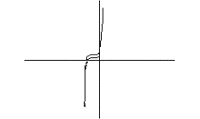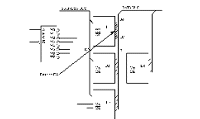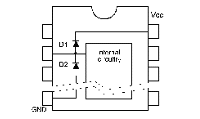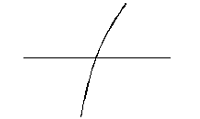
PCB test — pin-point faulty devices on bus systems without removal from circuit
|
||
| Printer Friendly Version | |
 |
Application Note 107
PCB test — pin-point faulty devices on bus systems without removal from circuit |
| Printer Friendly Version | |
| When testing PCBs a signature shows up
faulty on a bus line it can be difficult to decide which
device is causing the problem. Moving the COM line to the
faulty bus line can help isolate the device causing the
problem. Bus fault finding
with nodal impedance analysis
and
ICT |
|
 Fig 1 Typical good ASA data bus signature |
Comparing bus signatures When fault finding using nodal impedance analysis on a bus system it's a useful technique to use signatures on the other lines of the bus for comparison purposes. For example, the signatures on all the lines of the data bus will look similar and will often assume the shape of the signature below. |
| Similarly, all the lines of the address bus will have the same general shape. When one bus line looks significantly different from the others it's usually a sign of a problem on that line. When testing devices you'll normally connect the COM line to a convenient ground point on the board under test and probe components and device pins - the fault locator displays the signature between the node under test and ground. | |
 Fig 2 Data bus fault on D3 |
Bus signatures Consider the circuit below - seven of the data lines display the characteristic bus line signature (shown in Fig 1). |
 Fig 3 Device input protection |
The signatures on the good data lines are typical of many data bus signatures and portray the behaviour of the input protection diode circuitry (Fig 3). |
 Fig 4 Faulty signature on data bus line D3 |
The signature on data line D3 (Fig 4) differs from the signatures on the other data lines and suggests a fault in one of the devices on data bus line D3. The signature no longer displays diode action and indicates a breakdown in the I/O section of one of the devices on the bus. This type of signature is typical of devices damaged by excessive voltage at the pins (e.g. lightning strikes on telephone lines). |
| Isolating devices When the COM line is connected to the ground of the board under test, devices on the bus (U1, U2, U3 and U4 in the example) appear in parallel so it can be difficult to predict which device contains the fault. The solution is to remove the COM line from the board ground and transfer it to the line exhibiting the fault and probe other unique lines. In the example circuit you'll probably start testing the board by connecting the COM line to ground; once you have established that the D3 line is faulty connect the COM line to D3. Don't probe the device's Vcc and GND lines - they're common to all devices; the "CHIP ENABLE" and "OUTPUT ENABLE" lines for devices U1-U4 are unique to each device (other circuits will include other unique lines, e.g. "WRITE ENABLE" etc.) Probing the "CHIP ENABLE" and "OUTPUT ENABLE" lines should show significant differences in signatures and quickly isolate the faulty device. For methods of locating more difficult faults refer to AP108 - Advanced Bus Fault Finding Techniques. |
|
Polar Instruments Ltd polarinstruments.com Tel: +44 1481 253081 Fax: +44 1481 252476 © Polar Instruments 2002 |
 |
| © Polar Instruments 2002. Polar Instruments pursues a policy of continuous improvement. The specifications in this document may therefore be changed without notice. All trademarks recognised. | |